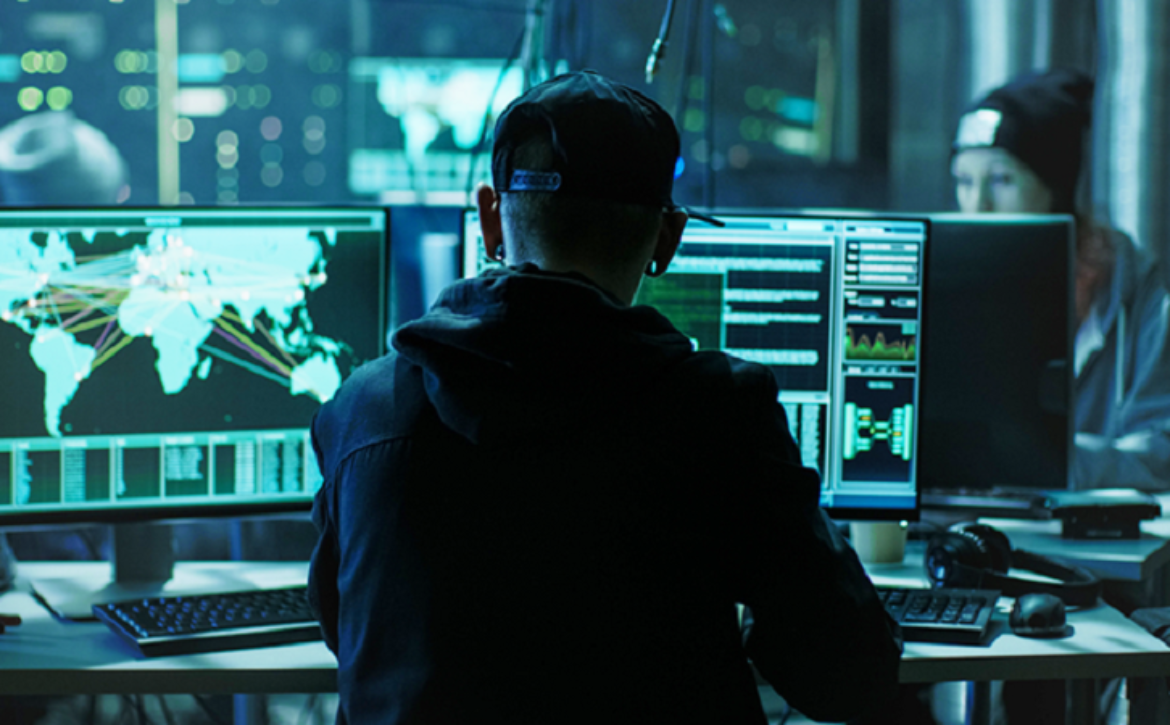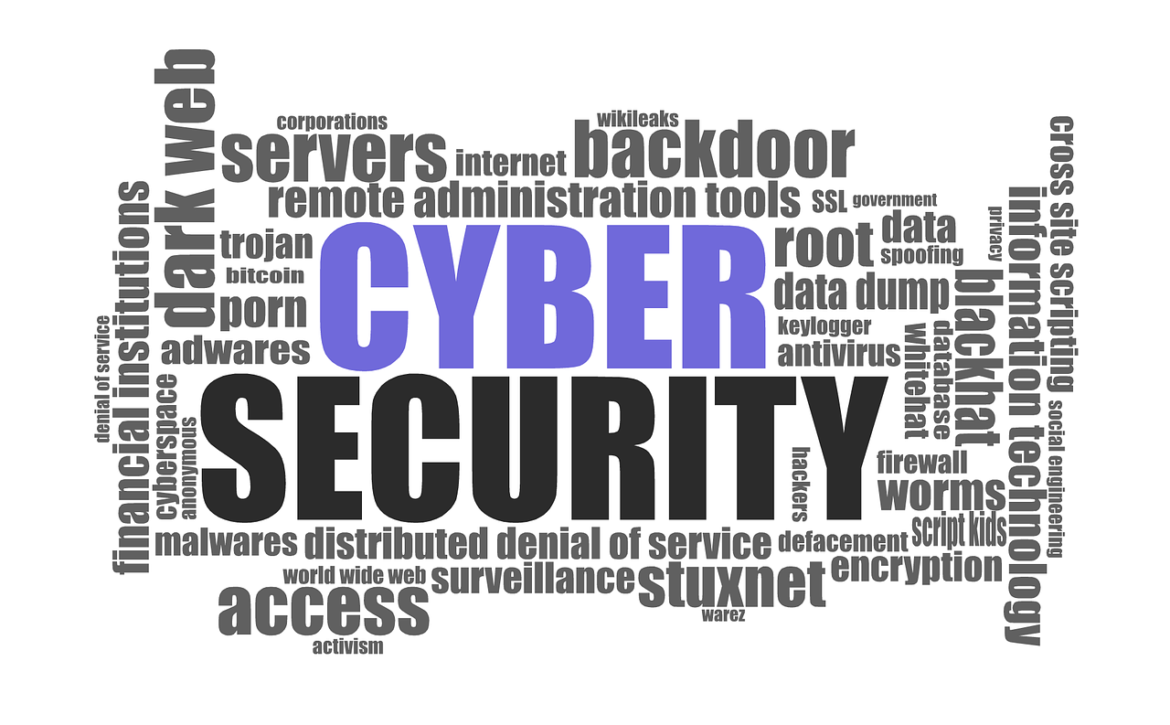How Artificial Intelligence is Revolutionizing Online Security
As the world becomes increasingly reliant on technology, cyber threats continue to rise. Cybersecurity has become a top priority for businesses and individuals alike in order to protect sensitive information and prevent data breaches. From identifying potential threats to quickly responding to attacks, AI is revolutionising online protection and changing the way we approach cybersecurity. In this article, we will explore the role of AI in cyber security and how it is helping organisations stay one step ahead of cybercriminals.
The importance of cyber security
——————————————
Artificial intelligence (AI) is revolutionising the way cyber security works. Cyber attacks are becoming more frequent and sophisticated, leading to an increased need for better and more advanced security measures. AI can play a significant role in addressing this need by providing a proactive approach to identifying threats before they happen.
One of the key benefits of AI in cyber security is its ability to learn from data and recognize patterns that humans may not be able to detect. This means that AI systems can identify potential threats as soon as they occur, allowing organisations to take swift action before any damage is done. Additionally, AI can analyse vast amounts of data much faster than humans can, which is crucial when dealing with large-scale attacks.
However, it’s important to note that while AI has the potential to enhance cyber security significantly, it’s not a foolproof solution on its own. Human oversight and expertise will always be necessary in order to ensure that AI systems are working effectively and accurately. The combination of human expertise with advanced technology like AI can create a powerful defence against cyber attacks – one that will become increasingly important as we continue to rely more heavily on digital technologies for work and daily life. Learn Oracle Fusion HCM Training to improve your career.
Definition and explanation of AI
——————————————
In other words, AI is a branch of computer science that involves developing intelligent machines that can perform tasks without human intervention. AI uses techniques such as machine learning, natural language processing, and neural networks to enable computers to learn from experience and improve their performance over time.
The concept of AI has been around since the 1950s but has gained significant attention in recent years due to advancements in technology. The potential applications of AI are vast, ranging from autonomous vehicles and smart homes to medical diagnosis and fraud detection. However, one area where AI is particularly useful is cybersecurity. With cyber threats becoming more sophisticated and frequent, traditional methods of protection are no longer sufficient. By leveraging the power of machine learning algorithms, AI can detect anomalies in network traffic patterns, identify potential threats before they occur, and respond quickly with minimal human intervention.
As a result, many organisations are investing heavily in AI-based security solutions as they seek to stay ahead of evolving cyber threats. While there are still challenges associated with implementing effective cybersecurity measures using AI, there is no doubt that this technology will continue to play an increasingly important role in online protection moving forward.
How AI is improving cyber security:
——————————————
Artificial Intelligence (AI) is changing the way we approach cyber security. The rise of cybercrime and data breaches has made it more important than ever for organisations to secure their networks and protect sensitive information. AI technologies are being used to improve the effectiveness of security measures, making it easier to detect and respond to threats in real-time.
One of the ways AI is improving cyber security is through machine learning algorithms. This allows organisations to take proactive steps to mitigate risks before they become bigger problems.
Another area where AI is having an impact on cyber security is in automated response systems. In the past, human intervention was required to address potential threats or attacks on a network, but now there are tools available that can automate this process. By using AI-powered automated response systems, organisations can quickly respond to potential threats without the need for human intervention. This not only saves time but also reduces the risk of errors or delays in responding to critical incidents.
How is artificial intelligence revolutionising the field of cybersecurity in 2023
——————————————
In 2023, artificial intelligence (AI) will continue to revolutionise the field of cybersecurity. AI can help detect and prevent cyber attacks by analysing large amounts of data and identifying patterns that indicate a potential threat. This technology can also be used to automate security processes, such as monitoring network activity and flagging suspicious behaviour.
However, there are concerns around the use of AI in cybersecurity as attackers may also use this technology for malicious purposes. It’s important for organisations to implement robust security measures that include regular updates and patches to software systems, employee training on safe browsing habits and password management practices.
What potential advancements can we anticipate in the future?
——————————————
Advancements in artificial intelligence (AI) are expected to revolutionise the field of cyber security, making it more efficient and effective. One major area of potential advancement is in machine learning algorithms that can detect anomalies in network traffic and identify potential threats before they can cause damage. This could lead to faster response times and fewer false alarms.
Another area where AI could have a significant impact is in the development of predictive analytics, which would enable organisations to anticipate attacks before they occur. By analysing large amounts of data from disparate sources, AI systems could identify patterns and trends that may indicate an impending threat.
Finally, advancements in natural language processing (NLP) technology could help improve the accuracy and effectiveness of automated threat detection systems. These systems would be better equipped to understand human language and recognize context-specific threats, potentially reducing the number of false positives generated by current security technologies.
The importance of ethical use of AI in cyber security
——————————————
The use of Artificial Intelligence (AI) in cyber security has provided a powerful tool to tackle the growing threats from attackers. AI can be utilised to detect and respond to potential attacks, analyse patterns and behaviour of hackers, and develop predictive models to identify future threats. However, it is important that ethical considerations are taken into account when implementing AI in cyber security.
One of the biggest concerns with using AI in cyber security is its potential for bias. If algorithms are based on data that has been collected and selected without input from diverse communities, this can lead to unjust outcomes. Additionally, there needs to be transparency around how the technology is used so that individuals whose data may be collected by these systems understand what is happening with their information.
Another ethical concern with using AI in cybersecurity is ensuring that human oversight remains an integral part of the decision-making process. It’s tempting for organisations to rely solely on machine learning algorithms but humans should remain involved as they can provide valuable contextual knowledge about events or situations which machines might not fully grasp. Ultimately, it’s essential that we prioritise ethical use of AI in cybersecurity so we don’t create more problems than we solve by introducing new risks or biases into existing systems or processes.
Examples of how AI is being used in cyber security
——————————————
One significant use of AI in cybersecurity is in threat detection and response. AI-powered tools can analyse vast amounts of data, identify patterns, and predict potential threats. For instance, some cybersecurity firms are using machine learning algorithms to scan network traffic for suspicious activities, such as attempts to access unauthorised resources or unusual login attempts.
Another way AI is being used in cybersecurity is through automation. With the increasing volume of cyber attacks, it’s becoming harder for human analysts to keep up with the pace. However, by automating certain tasks like vulnerability scanning and patch management with AI software tools, organisations can save time while reducing the risk of human error.
Finally, AI can help improve incident response times by providing real-time alerts when a breach occurs. This allows security teams to take immediate action before any damage occurs. Additionally, some companies are deploying chatbots equipped with natural language processing (NLP) capabilities that can converse with users about security concerns and provide recommendations on how to stay secure online.
Conclusion:
In conclusion, it is clear that the role of artificial intelligence in cyber security is becoming increasingly important as technology evolves and threats become more sophisticated. AI has proven to be a valuable tool in detecting and preventing cyber attacks by analysing data in real-time and identifying patterns that humans may miss. Its ability to continuously learn and adapt also makes it a powerful defence mechanism against evolving threats.
However, while AI is revolutionising online protection, it is not a silver bullet solution. It cannot replace human expertise or completely eliminate the risk of cyber attacks. Organisations must still prioritise investing in skilled professionals who can work alongside AI systems to develop effective strategies for protecting their networks and data.
Ultimately, the future of cyber security will likely involve a combination of human insight and technological innovation working together to stay one step ahead of malicious actors. As long as organisations remain vigilant about their security posture and continue to invest in both people and technology, they can better protect themselves from potential breaches or attacks.



